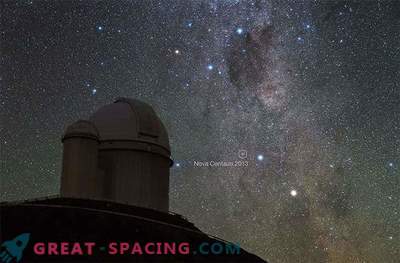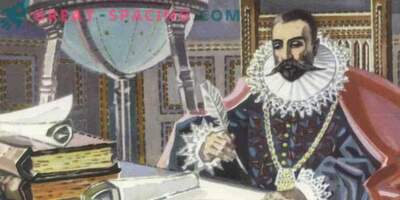
In a new study, scientists say that the explosion observed in 1604 by Johann Kepler was caused by the merging of two stellar remnants.
Kepler's supernova, represented by the remnant, was located in the constellation Ophiuchus, the plane of the Milky Way, at a distance of 16,300 light years from the Sun. The researchers tried to find a possible surviving star in a binary system where the explosion occurred.
In a binary system, where one of the stars (with the largest mass) reaches the end of life, it becomes a white dwarf, and the second gives it a certain part of its mass. The process leads to a central ignition of carbon in the dwarf and causes an explosion that is 100,000 times brighter than the original luminosity. This cruel phenomenon is called a supernova event. One of these can be observed in the sky, as in the case of SN 1604.
Kepler's supernova came from the explosion of a white dwarf in a binary system. Therefore, scientists were looking for a possible surviving neighbor. Such an explosion could increase the luminosity and speed of a friend, as well as change the chemical composition. Therefore, the search focused on the stars with a specific anomaly that can help identify the satellite of a white dwarf that exploded 414 years ago.
I had to conduct a thorough inspection and characterize all the stars near the rest of SN 1604, but this did not lead to detection. For the study used images from the Hubble Space Telescope. The goal is to determine the correct movements of a group of 32 stars around the center of the supernova remnant. They also used FLAMES information on the 8.2-meter Very Large Telescope, which took up the characteristics of the stars and the calculation of their distances and radial velocities relative to the Sun.

The original drawing by Johann Kepler from “De Stella Nova” (1606), reflecting the location of the supernova (marked N)
There is an alternative mechanism for the formation of an explosion. This is the fusion of two white dwarfs or a white dwarf with the carbon and oxygen nucleus of a neighboring star at its late evolutionary stage. There are no stars with abnormal behavior in the remnant field, which means you need to pay attention to the proposed options.
Kepler's supernova is one of 5 “historical” thermonuclear supernovae. The rest: the Tycho Brahe supernova, found in 1572, SN 1006, SN 185 (may be the source of RCW86) and opened in 1900 SNIa G1.9 + 03.











































